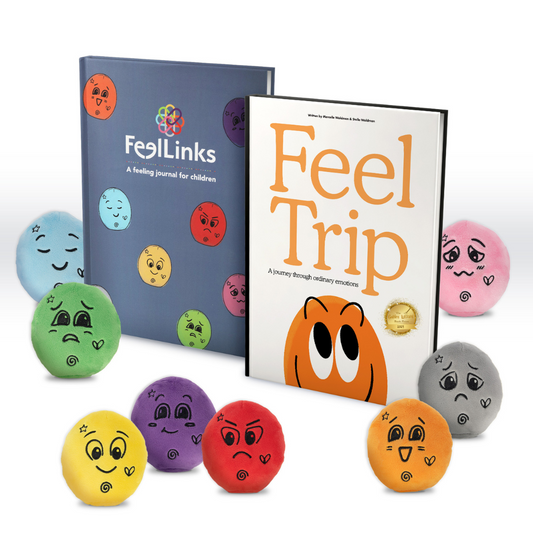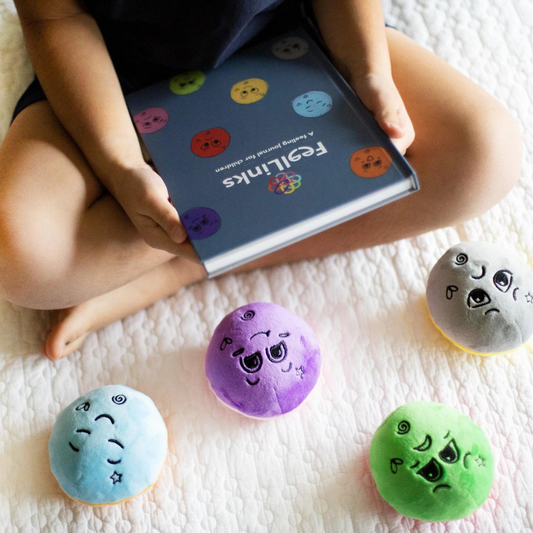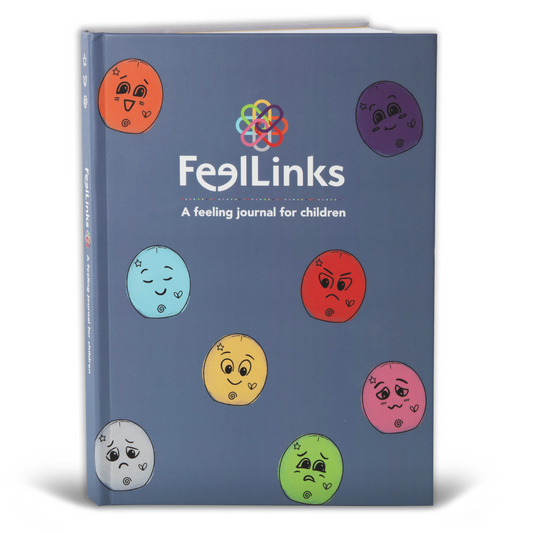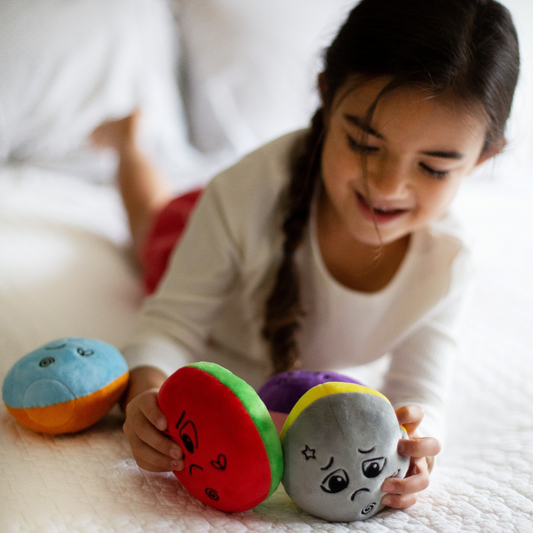Emotional Development: Beginning with our preschool age children
Share
“Preschoolers are becoming able to discern their own and other’s emotional states, and to talk about them fluently. Finally, they are beginning to “up-“ or “down”- regulate emotions, depending on their goals.” (Denham, 1998, Saarni, 1990)
*Before reading this post, please be mindful that we must always take into consideration the differing developmental rates and uniqueness’s of all children when looking at developmental continuums.
Today we will discuss our preschool age learners and focus in on their emotional development. Most often, children begin as egocentric or self-centered individuals. During the preschool years, they will often begin showing signs of developing and understanding a broader sense of the world around them, this includes a greater awareness of others, relationship building and beginning to understand realistic vs. fantasy.
According to Piaget’s Stages of Cognitive Development (1951):
Ages 0-2: Children begin at the sensorimotor stage, developing understanding of the world through sensory experiences: seeing, hearing, tasting, touching, and movement.
Ages 2-7: Children move to the preoperational stage, as they begin to use their imagination, build friendships, acquire impulse control, and develop a broader awareness of themselves and others around them.
“We are talking about how children can respond emotionally, yet simultaneously and strategically apply their knowledge about emotions and their expression to relationships with others, so that they can negotiate interpersonal exchanges and regulate their emotional experiences” (Saarni, 1990).
Here are the emotional competency developments we will begin to see in preschool age children –
Developing emotional awareness – Children will begin to develop awareness of their own feelings, then emotions in others.
Recognizing, identifying, or perceiving emotions – Children will begin to recognize and understand what a feeling is. Children will learn to understand facial expressions, body language and tone of voice. They can attribute these to others, and eventually label these feeling as “happy”, “angry”, “sad”; etc.
Describing feelings – Children will begin to describe and name emotions. They will learn how to use emotional vocabulary to convey how they feel.
Empathizing – Children will begin extending concern for what others are feeling and even showing sympathy for animals. You might even hear your child doing this during imaginative play.
Controlling and managing their emotions – Children will begin to learn and eventually apply knowledge about when it is appropriate to act or respond when they are feeling something.
Understanding what causes feelings – Children will begin to understand the cause of their feelings and eventually the cause of others feelings.
Understanding emotion-behavior connections – Children will begin to understand why emotions cause certain behaviors. (i.e. “Mom raised her voice at me because she’s angry that I did not tell the truth”).
There is no better time than now to focus on building emotional intelligence skills in your young children.
So how do we teach these vital life skills to children?
You are the number one model for the child(ren) in your life. Expressing your own emotions, labeling your feelings, and talking about them aloud. Children should understand that there are pleasant and tough emotions, and all feelings are valid. Children are constantly watching and listening to the adults in their lives. Be responsive, rather than reactive. Meet children’s actions with a calm tone and thoughtful responses. Act in ways that align with your core values and in ways you are asking your child to act.
Helping children label their feelings in one of the most important ways we can support them in regulating their emotions; as Dr. Daniel Siegel says, “Name it to tame it.” Research shows that the mere labeling of emotions truly helps us regulate them, and it also helps us better support the needs of our child. Label your own emotions, let your child know when you are experiencing positive and tough emotions. Support children by using phrases such as, “It looks like you are feeling _______________ because I can see ______________. This especially helps younger children in gaining an understanding of their emotions and helps to build greater emotional vocabulary. There are also great resources to help with teaching and focusing on these skills with children. FeelLinks Journal and Dolls set* is a wonderful resource to use with children ages 4+ to encourage the development of these important lifelong skills. There are also many wonderful children’s books that teach about emotions. Teaching our children how to recognize, understand, label, express, and regulate their feelings will support them in gracefully dealing with life’s ups and downs in this increasingly complex world.
While it is quite difficult for us to grasp and can be hard for us to do, it is important we let our children experience failure. If we are always there to swoop in and fix things that feel tough for our children, we are actually doing them a disservice. Failure helps build skills such as: grit, resilience, growth mindset, and the ability to problem-solve. We want our children to know that they are able to deal with the tough times and bounce back afterwards.
*I created FeelLinks emotion plush dolls and feelings journal, a unique, tangible resource, to engage children in focusing on these vital life skills. Each set comes with information on how to use the set, some ideas of best ways to communicate with your child/student about emotions, and other directions to help support you along the way. Order today for your home, school, or healthcare practice!






